Cat litter has become an essential household item for cat owners, serving as a convenient
and hygienic way to maintain their furry friend’s litter box. However, with the rise in popularity
of owning cats, the cost of cat litter is constantly on the rise of a hefty price tag.
In this blog post, we’ll dive into the surprising truth behind why cat litter is so expensive and explore some budget-friendly alternatives that won’t break the bank. Get ready to save money while keeping your feline friend happy and healthy!
Factors that contribute to the high cost of cat litter:
Several factors contribute to the high cost of cat litter. These include
production costs, materials used, marketing expenses and much more.
Production Costs:
The production process of cat litter involves various steps, such as mixing, drying, and
packaging. These processes require specialized equipment and skilled labor, which
increases the overall cost.
In addition, manufacturers need to maintain strict quality control measures to ensure that the
litter is safe for cats and effective in controlling odors. This also adds to the production costs.
Firstly, the raw materials—often clay, silica, or biodegradable substances like recycled paper, wood, or corn—can be costly. The prices for these resources fluctuate based on demand, availability, and economic factors.
In the case of clay-based litters, the mining process is resource-intensive, and the same
goes for the acquisition and processing of alternative materials.
Manufacturing Process:
The manufacturing process is another aspect that adds to the bill. Transforming raw
materials for the final, package-ready product require machinery, energy, and labor.
High-quality cat litter often undergoes refinement to ensure low dust, clumping
ability, and odor control. Each of these steps in the manufacturing process adds a layer of
cost.
Materials Used:
One of the primary materials used in cat litter is clay, which is a non-renewable resource. As a result, its availability is limited and can lead to higher prices. Moreover, clay must be
mined from specific locations and transported to manufacturing facilities, adding
transportation costs.
Another material commonly used in cat litter is silica gel crystals. These crystals are highly
absorbent and help control odor efficiently, but they come at a higher cost compared to other
materials.
Marketing Expenses:
In today’s competitive market, companies invest heavily in marketing strategies such as
advertising campaigns, product promotions, social media presence, and influencer
collaborations to stand out. These marketing expenses add up and ultimately reflect the price of cat litter products.
Advertising Costs:
Cat litter brands invest heavily in advertising to promote their products through television, radio, print media, online ads, and social media platforms.These advertising expenses are significant and are often factored into the retail price of the product.
Promotional Activities:
Companies engage in promotional activities like discounts, coupons, loyalty programs, and
in-store promotions to attract customers and encourage repeat purchases. While these
promotions can drive sales, they also incur costs passed on to consumers through
higher prices when not offset by increased volume.
Branding and Packaging:
Building a solid brand image and investing in attractive packaging designs require
substantial resources. Cat litter brands invest in branding efforts to differentiate themselves
from competitors and create perceived value in consumers’ minds.These branding and
packaging costs contribute to the overall price of the product.
Marketing Collateral:
Producing marketing materials such as brochures, product catalogs, and point-of-sale
displays also add to marketing expenses. These materials aim to educate consumers about
the features and benefits of cat litter products, but their production and distribution costs
are included in the product’s pricing.
Digital Marketing:
With the rise of digital channels, cat litter brands allocate resources to digital marketing
efforts such as website development, search engine optimization (SEO), content creation,
email marketing, and social media advertising. These digital marketing expenses, including
hiring marketing professionals or agencies, contribute to the overall cost of the product.
Market Research:
Cat litter companies conduct market research to understand consumer preferences, identify
trends, and develop targeted marketing strategies. The costs associated with market
research, including surveys, focus groups, and data analysis, are factored into the product’s
Pricing.
Distribution and Retailer Partnerships:
Marketing expenses include costs associated with distributing cat litter products to
retailers and establishing partnerships with them. This may involve logistics, Transportation,
and promotional allowances paid to retailers to secure shelf space and prominent product
Placement.
Trade Shows and Events:
Participating in industry trade shows, pet expos, and events incurs expenses related to
booth rental, travel, marketing materials, and promotional activities. These events allow cat litter brands to showcase their products, network with retailers, and engage with potential customers.
Public Relations (PR):
Cat litter companies invest in PR efforts to manage their reputation, handle crises, and
generate positive media coverage. PR expenses may include hiring PR agencies, issuing
press releases, and conducting media outreach, all of which contribute to the overall
marketing budget.
Measuring and Evaluating ROI:
Finally, cat litter brands allocate resources to measure and evaluate the return on investment.
(ROI) of their marketing initiatives. This includes tracking sales performance, analyzing
consumer feedback, and assessing the effectiveness of different marketing channels. While
these activities are essential for optimizing marketing strategies, they also add to the overall
cost of the product.
Consumer Preferences and Behavior:
Consumer preferences and behavior play a significant role in determining pricing for cat litter. Some pet owners prioritize quality over price, opting for premium brands with advanced features. These consumers will pay more for odor control, clumping abilities, or eco-friendly options.
On the other hand, budget-conscious pet parents may seek out more affordable cat litter options that still offer decent performance. They might be looking for discounts, promotions, or bulk deals to save money without compromising cleanliness.
Consumer behavior also influences market trends – as demand shifts towards certain types of cat litter (such as natural or dust-free varieties), prices can fluctuate accordingly. This dynamic relationship between supply and demand impacts the overall cost of cat litter products available in stores and online platforms.
Demand for Premium Features:
As pet owners, we want the best for our furry friends, including providing them with high-quality cat litter. While it may seem expensive, understanding the factors influencing pricing can help us make more informed decisions when choosing the right product for our cats. From considering quality and performance to weighing consumer preferences and behaviors, there are various aspects to consider.
The demand for premium features in cat litter drives up prices as manufacturers invest in innovative technologies and materials to meet consumers’ expectations. However, you can still break the bank to keep your cat’s litter box clean and fresh.
By exploring budget-friendly options, looking out for deals from premium brands and affordable alternatives, and understanding how different factors affect pricing in the cat litter market, you can find cost-effective solutions without compromising quality.
So next time you’re shopping for cat litter or feeling frustrated by its seemingly high costs, remember there are ways to save on your purchases while still providing your feline companion with a comfortable environment.
With a little research and savvy shopping techniques, you can strike a balance between value for money and effectively meeting your pet care needs. After all, keeping our beloved cats happy is priceless!
Brand Loyalty:
Brand loyalty plays a significant role in the pricing of cat litter products. Many pet owners develop strong attachments to specific brands based on effectiveness, scent, and clumpability. Once a cat owner finds a litter that works well for their feline companion, they often hesitate to switch to another brand.
This loyalty allows manufacturers to maintain higher prices as consumers are willing to pay more for their preferred brand. Companies invest heavily in marketing efforts to build customer trust and credibility, fostering brand loyalty over time.
While cheaper alternatives may tempt some, loyal customers often overlook price increases in favor of familiarity and perceived quality associated with their trusted brand. This allegiance contributes to the sustained demand for these products despite rising costs in the market.
Inflation and Cost of Living:
As cat owners, we all want the best for our furry friends. However, with rising inflation and the increasing cost of living, it’s becoming more challenging to afford necessities like cat litter. These economic factors have impacted the prices of pet supplies, leading to higher expenses for cat owners.
When considering budget-friendly options, it’s essential to understand how inflation drives up costs. Companies may need to adjust their pricing due to rising production and transportation expenses associated with making cat litter products.
As consumers navigate these financial challenges, finding affordable cat litter alternatives becomes crucial. By exploring different brands and comparing prices, pet owners can make informed decisions that balance quality and affordability while providing their cats with a clean home environment.
Quality and Performance:
Regarding cat litter, quality, and performance influence the price tag. Premium cat litters often boast superior odor control, clumping ability, and dust reduction compared to their cheaper counterparts. These features contribute to a higher cost but can result in a more pleasant experience for you and your furry companion.
Investing in high-quality cat litter means fewer changes and less waste overall, making it a cost-effective choice in the long run. While economical options exist, they may provide a different level of effectiveness or convenience than pricier brands.
Consider your priorities when selecting cat litter – whether it’s odor control, sustainability, or ease of cleaning. Balancing quality with price is essential for finding the best value for money without compromising performance.
Environmental Impact and Cat Litter Cost:
Regarding the cost of cat litter, one factor that often gets overlooked is its environmental impact. Traditional clay-based litters are not only costly but also harmful to the environment—the process of mining and manufacturing clay litter results in significant ecological damage.
Furthermore, most conventional litters end up in landfills where they do not biodegrade quickly, contributing to the growing waste crisis. When considering long-term environmental implications, this adds hidden costs to the overall cat litter price.
As awareness around sustainability grows, more pet owners are seeking eco-friendly alternatives like biodegradable or compostable litter made from materials such as corn, wheat, or recycled paper. While these options come at a slightly higher upfront cost than traditional litters, their lower environmental impact can make them a more affordable choice in the long run for your wallet and the planet.
Some innovative companies are also developing high-performance, eco-friendly litters that reduce tracking and odor without compromising sustainability. These products may initially have a premium price tag but offer value through their efficiency and minimal ecological footprint over time.
Eco-Friendly and Biodegradable Options:
Eco-conscious consumers opt for biodegradable litter from recycled paper, wood, wheat, or corn. However, sustainability comes with a higher price tag due to more expensive materials and production methods.
In addition to conventional marketing strategies, numerous companies prioritize Eco-friendly packaging options or opt for sustainable materials in their products. These initiatives, particularly prevalent in the realm of Eco-friendly Cat Litter Alternatives, are advantageous for the environment. However, they entail an extra cost that ultimately gets transferred to consumers.
Cat Health Considerations and Price Factors:
Cat health considerations play a significant role in the pricing of cat litter. Higher quality litters often have advanced features promoting feline well-being, such as odor control and dust-free formulas. These health-focused benefits can drive up the overall cost of the product.
Additionally, certain types of cat litter may be recommended for cats with specific health conditions, like allergies or urinary tract issues. Due to their targeted formulations, specialized litters designed to address these concerns tend to be pricier than standard options.
When choosing a cat litter based on health considerations, it’s essential to prioritize your pet’s needs over cost savings. Investing in a premium litter that supports your cat’s health can lead to long-term savings by preventing potential medical issues.
Remember, while price is undoubtedly a factor when selecting cat litter, prioritizing your furry friend’s well-being should always be the top priority.
Innovations Driving Up Cat Litter Prices
Innovations drive up cat litter prices so consumers may face higher costs for their furry friends’ essential needs. While these advancements offer benefits such as improved odor control and clumping abilities, they also come with a price tag.
Pet owners must weigh the factors influencing cat litter pricing and explore affordable options that meet their budgets and their cats’ needs. By staying informed about brand loyalty, environmental impact, cat health considerations, and the latest innovations in the market, pet parents can make educated decisions when choosing suitable cat litter for their feline companions.
Balancing quality with cost is critical to ensuring a happy and healthy environment for pets and their owners.
Advanced Odor Control Technology:
To keep your home smelling fresh, many litter brands invest in sophisticated odor-eliminating technology. Whether it’s carbon or plant extracts, these advancements are costly.
High-quality cat litters often boast superior absorbency, efficiently clumping together to encapsulate moisture and minimize odors. This capability stems from premium materials such as natural clay or silica gel, which have higher absorbent capacities than lower-grade alternatives.
Advanced formulas may incorporate activated charcoal or antimicrobial agents, further enhancing odor control and maintaining a fresher environment for both cats and their owners.
Dust-Free Formulations:
Dust-free cat litter options are usually pricier due to the additional manufacturing steps required to reduce dust.
Moreover, some brands offer premium features like scented varieties or dust-free formulas that cater to customers with specific preferences or needs. While these options may add value for some buyers, they also contribute to a higher price tag for these products.
Low-quality cat litter can produce excessive dust when poured or disturbed, leading to respiratory issues for cats and humans. High-quality litters prioritize dust control through finer granules or dust-minimizing additives, ensuring a cleaner and safer litter box environment.
While the inclusion of dust-reducing components may elevate production costs, the resulting benefits in terms of respiratory health justify the higher price point for conscientious consumers.
Clumping Technology:
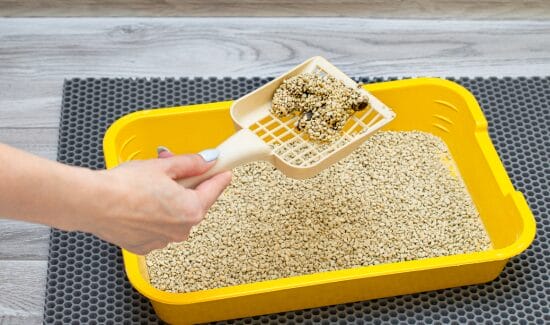
Have you ever wondered what makes clumping cat litter so unique? It’s all about the technology behind it. Clumping cat litter is designed to absorb liquid waste quickly and form tight, easy-to-scoop clumps. This helps keep your cat’s litter box clean and extends each fill’s life.
The key to this technology lies in the ingredients used in clumping litter, such as bentonite clay or silica gel. These materials create a solid mass when they come into contact with moisture, making it simple to remove soiled areas without having to change the entire box every time.
Investing in cat litter with advanced clumping technology can reduce waste and save money in the long run. Plus, your feline friend will appreciate a cleaner environment for their bathroom activities!
Packaging and Transportation:
Packaging and Transportation play a significant role in the cost of cat litter. The materials used for packaging, as well as the distance the product needs to travel to reach consumers, can impact the final price. Suppliers must consider these factors when determining pricing, which can ultimately affect how expensive cat litter is for pet owners.
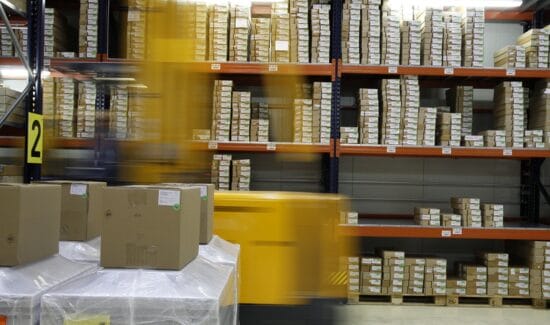
When looking for affordable cat litter options, it’s essential to consider all these factors that contribute to the overall cost. By understanding the technology behind clumping, competition in the market, different types of cat litter available, and packaging and transportation expenses, pet owners can make informed decisions on purchasing quality products at reasonable prices.
Research and comparison shopping can help you find cost-effective solutions without compromising on quality. By considering savings strategies and learning what affects cat litter prices, pet owners can provide their furry friends with comfortable facilities while controlling expenses. So, next time you’re shopping for cat litter, remember these factors to find the best value for your money!
Some litters come with added convenience features like lightweight formulas or multi-cat strength, targeted at making life easier for the cat owner but also bumping the price.
Research and Development:
Continuous improvements and innovations require investment in research and development,which can result in higher costs for newer litter products.
Regulatory Compliance:
Litter companies must comply with various regulations to ensure their products are safe for pets, the environment, and households. Compliance with these laws can add to the overall cost of cat litter.
Economy of Scale:
more prominent brands that benefit from economies of scale.
Smaller litter brands may not produce the volume required to lower the per-unit cost, unlike
Competition In The Cat Litter Market:
The cat litter market is a competitive arena where brands battle for pet owners’ attention to provide the best for their furry companions. There’s no shortage of choices, with so many options available, from clumping to non-clumping, scented to unscented, and natural materials to synthetic alternatives.
Each brand strives to stand out by offering unique features such as odor control technology, dust-free formulas, or eco-friendly packaging. This fierce competition drives innovation but also drives up prices as companies invest in research and development to stay ahead of the curve.
Pet owners benefit from this competition as brands constantly strive to improve their product’s performance and appeal. However, with more premium options entering the market, finding affordable yet effective cat litter can sometimes feel like searching for a needle in a haystack.
Demand For Different Types of Cat Litter:
Cat owners know that when it comes to cat litter, one size does not fit all. The demand for different types of cat litter arises from the diverse needs and preferences of both felines and their human companions.
Clumping cat litter is a popular choice because it allows easy scooping out of solid waste. However, pet parents prefer non-clumping varieties for their odor-control properties.
Some cats are sensitive to scented litters, prompting the need for fragrance-free options. Others may require dust-free formulas to prevent respiratory issues.
Biodegradable litter from materials like corn, wheat, or pine appeals to environmentally conscious consumers seeking sustainable alternatives. Crystal-based litters offer excellent absorption rates and odor control capabilities.
With such a wide range of options available on the market, it’s no wonder that the demand for different types of cat litter continues to drive innovation in this essential pet care product.
Longevity and Efficiency:
High-quality cat litters require less frequent replenishment due to their superior
performance in absorbing moisture and controlling odors. This longer ty means cost
savings over time despite the initial higher investment.
Additionally, efficient clumping and easy scooping facilitate quicker and hassle-free litter box
maintenance, enhancing the overall user experience, and justifying the higher upfront cost.
Retail Markup:
Finally, remember that retailers also add a markup to the products, which can account for a significant part of the cost of cat litter.
In conclusion, the price of cat litter is impacted by various factors ranging from the materials used to the packaging design and brand marketing efforts. While it might seem bewildering to justify the expense of something that ends up in the trash, these factors play pivotal roles in providing high-quality products that aim to satisfy human and feline preferences.
If you’re looking for affordable cat litter options, consider researching products that balance quality with cost-effectiveness. It might involve trial and error, but finding the right solution can lead to a happy cat and a happy wallet.
Remember, in the quest for affordable cat litter options, keeping an eye on your cat’s health and comfort is essential. After all, they’re the ones using it. Consider all cat litter pricing factors carefully before switching to a new brand or type of litter, and constantly monitor how your beloved furry friend adapts to it.
Finally, remember that retailers also add a markup to the products, which can account for a significant part of the cost of cat litter.
The impact of consumer demand on cat litter prices:
Consumer demand plays a significant role in determining cat litter prices. As the popularity and ownership of cats continue to rise, so does the demand for cat litter. This increase in demand has had a noticeable impact on the pricing of cat litter, making it one of the most expensive pet care products on the market.
One of the main reasons for this is that cats are now more commonly kept indoors than outdoor pets. This means owners rely heavily on cat litter for their
furry friend’s waste disposal.
Studies have shown that an average indoor cat will use around 100 pounds of litter annually. As a result, manufacturers constantly need to produce more cat litter to meet this high demand.
The rising trend of owning multiple cats in households has also increased cat litter demand. With each additional feline companion comes an even greater need for litter, leading to higher production costs and, ultimately, higher prices.
Moreover, consumers’ expectations have also changed over time, with many seeking out premium or specialized types of cat litter, such as biodegradable or scented varieties. These little ones often come at a premium price due to their perceived benefits and
eco-friend liness. Consumers have become more conscious about their environmental impact and health concerns regarding traditional clay-based litter, so they are willing to pay extra for these alternative options.
Additionally, with online shopping becoming increasingly popular, consumers can now access a broader range of options when purchasing cat litter. This has made it more accessible for companies to introduce new and innovative products at competitive prices while maintaining profits.
Competition among various brands has also played a significant role in driving up prices. With numerous companies vying for consumer attention and loyalty, they must constantly
innovate and improve their products’ quality while still keeping prices competitive. This pressure causes manufacturers to maintain profit margins by raising prices to meet rising production costs.
The increasing demand for cat litter has significantly impacted its pricing. As more and more cats become indoor pets, consumers’ expectations change, and competition among brands intensify, we can expect to see cat litter prices continue to rise.
However, as pet owners, it is essential to consider not only the cost but also the health and well-being of our feline companions when choosing a suitable litter option.
Comparison of different types and brands of cat litter and their prices:
When it comes to shopping for cat litter, a variety of options are available in the market.
Choosing the right one can seem overwhelming from various types such as clumping, non-clumping, crystal, natural, and more to numerous brands like Tidy Cats, Arm & Hammer, Fresh Step, and World’s Best Cat Litter. In addition, the varying prices can be a real challenge for pet owners when making an informed decision.
To grasp the reasons behind the potentially high cost of cat litter, it’s essential to delve into the various types and brands offered in the market. Exploring these options can shed light on the factors influencing pricing. Now, regarding the best method for disposing of cat litter…
1. Clumping vs Non-Clumping:
Clumping litter comprises small particles that bind together when they come in contact with moisture or urine. This makes learning more accessible, as you only need to scoop out the clumps instead of changing all the litter every time.
Hammer offer clumping litter at an average price range of $15-$25 for a 20-pound bag. On the other hand, non-clumping litter is usually cheaper but requires frequent changing as it absorbs moisture but does not form clumps.
2. Crystal vs natural:
Crystal litter is made from silica gel beads that absorb urine and trap odor effectively while lasting longer than traditional litter. However, this type of litter can be pricier, with brands like Fresh Step offering them an average price range of $25-$35 for an 8-pound bag.
Natural litter made from materials like corn or wheat is usually biodegradable and eco-friendly but may have a shorter lifespan than crystal litter.
3. Brand comparison:
With so many brands claiming to have the best cat litter in terms of quality and odor control, it’s essential to do some research before making a purchase decision solely based on brand recognition or popularity. Some lesser-known brands may offer good quality litters at lower prices than big names like Purina or Friskies. It’s always a good idea to compare prices and read reviews from other cat owners to find the best value for money.
While it may seem that cat litter is expensive, understanding the different types and brands available can help pet owners make an informed decision based on their budget and their cat’s needs.
It’s also important to remember that investing in suitable quality litter can save your money in the long run as it will require less frequent changes and provide better odor control.
Tips for saving money on cat litter costs:
As cat owners, we know that litter is essential for our furry friends. However, the cost of cat litter can quickly add up and become a significant expense in our monthly budget.
If you want to save money on cat litter costs without compromising quality, here are some tips to help you.
1. Buy in bulk:
Buying in bulk is one of the most effective ways to save money on cat litter. Purchasing larger quantities can often result in significant discounts, reducing the overall cost per pound or kilogram. Buying in BK means fewer trips to the store and less time worrying about running out of litter.
2. Sign up for loyalty programs:
Many pet stores offer loyalty programs with discounts or rewards for frequent purchases. Signing up for these programs can lead to significant savings, especially if you have multiple cats and need to buy litter regularly.
3. Try different different brands:
While it may be tempting to stick with one brand of cat litter your feline friend is used to, exploring other options could save you a lot of money. Some brands may offer similar quality at a lower price point, so feel free to experiment and find what works best for you and your cat.
4. Use coupons:
Keep an eye out for coupons from pet stores or manufacturers that offer discounts on cat litter purchases. You can also check online coupon websites or sign up for newsletters from pet supply companies to stay updated on any deals or promotions.
5. Consider alternative options:
Cat litters made from natural materials such as corn, wheat, or pine pellets are becoming increasingly popular due to their environmental friendliness and lower costs than traditional clay litters. These alternatives may require more frequent changes but can still be a cost-effective option in the long run.
6. Use less cat litter:
While it’s essential to maintain a clean litter box for your cat’s health, you may be using less litter than necessary. The recommended depth for most clumping litters is 2-3 inches, so stick to this amount and avoid overfilling the box.
Cat litter costs can add up quickly, but with these tips, you can save money without sacrificing your cat’s well-being. By being strategic with bulk purchases, taking advantage of loyalty programs and coupons, and considering alternative options or using less litter, you can find a balance between quality and affordability for your furry companion’s litter needs.
Alternatives to traditional cat litter and their affordability:
Several alternatives to traditional cat litter offer an affordable option for cat owners. These alternatives save you money and provide additional benefits for you and your feline friend.
1. Recycled Paper Pellets:
Recycled paper pellets are an environmentally friendly alternative to traditional clay litter.
They are made from recycled newspapers and cardboard, making them biodegradable and ecologically safe. These pellets are highly absorbent, trapping odors effectively, and can hold up to three times their weight in liquid. They are all dust-free, which benefits cats with respiratory issues or allergies. Additionally, they are lightweight, making them easy to handle and dispose of.
2. Walnut Shells:
Walnut shells offer a natural and budget-friendly alternative to clay litter. They are made from crushed walnut shells, making them biodegradable and eco-friendly. Not only do they effectively absorb moisture and control odors, but they also have a natural scent that helps mask unpleasant smells. Furthermore, walnut shell litter is low-dust, making it safer for cats with respiratory issues or allergies.
3. Pine Pellet :
Pine pellet litter is another environmentally friendly option that offers affordability without compromising performance. These pellets are made from compressed pine sawdust and contain no harmful chemicals or additives like traditional clay litter. They have excellent odor control properties due to the naturally occurring oils in pine wood, which neutralize odors when in contact.
4. Biodegradable Corn Litter:
Corn-based litters provide a natural alternative that is gentle on your cats’ paws while also being kind to the environment! Made from r renewable corn cobs or kernels, these litters clump easily when wet and form solid clumps that make cleaning up easier while controlling odors effectively.
5. Production Of Natural Cat Litter:
Besides purchasing pre-made alternatives at pet stores or online retailers, creating your own cat litter at home is always possible. With a few simple ingredients, such as baking soda, shredded paper, and sawdust, you can create a natural cat litter that is both cheap and effective.
Multiple alternatives to traditional cat litter offer affordability without sacrificing quality. These options save you money in the long run but also have added benefits, like being environmentally friendly, low-dust, and safer for cats with sensitivities or allergies. Consider trying one of these alternatives to see which works best for you and your furry companion!
Final Thoughts:
The topic of expensive cat litter has been a hotly debated issue among pet owners for years.
Many argue that the high price tags attached to these products are unjustified, while others swear by their effectiveness and refuse to use anything else. So, the question remains – is expensive cat litter worth the cost?
To answer this question, we must first understand what makes cat litter so expensive. The principal reason for the high prices is the materials used in its production. Most premium cat litters are made from natural and biodegradable ingredients such as clay, wood particles, or corn-based materials. These materials are more costly to source and process than traditional clay litter.
Another factor contributing to the high price of cat litter is its advanced formula and technology. Many expensive brands invest heavily in research and development to create litters with superior odor control, clumping capabilities, and dust-free properties. This means that you are paying for quality materials and innovative features that make cleaning up after your feline friend easier.
Now, let’s consider if these qualities justify the steep prices of some cat litter. The truth is, it depends on your individual preferences and needs as a pet owner. If you have multiple cats or live in a small space where odors can quickly become overpowering, investing in a top-of-the-line litter with robust odor control may be worth it or live in a small space.
It’s also essential to note that cheaper options may be more costly in the long run due to their lower absorbency and clumping capabilities. This means you may need to use more litter or change the entire litter box more frequently, increasing expenses over time.
Whether expensive cat litter is worth it depends on your preferences, budget, and circumstances. It’s crucial to weigh each product’s pros and cons carefully before deciding. Also, try different brands and see which works best for you and your furry companion. After all, finding the perfect cat litter is a crucial part of being a responsible and loving pet owner.

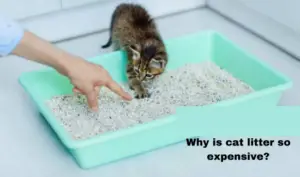
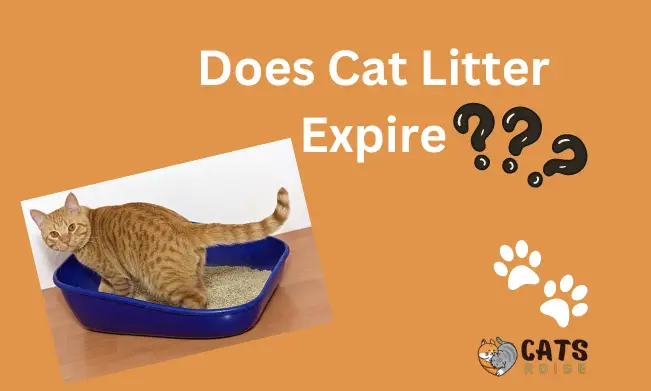
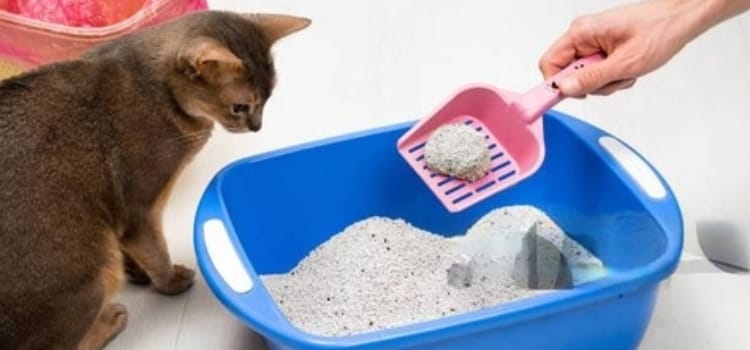
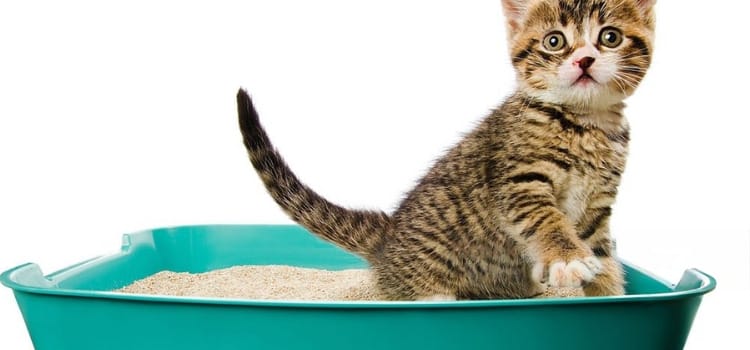
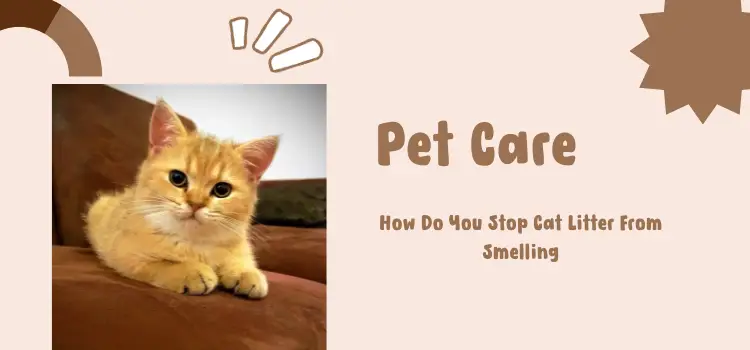
Thank you for your openness to explore various topics! If you have any specific questions or areas of interest you’d like to discuss, feel free to share them. Whether it’s about the latest advancements in technology, recent scientific breakthroughs, thought-provoking literature, or any other subject, I’m here to offer insights and assistance. Just let me know how I can be of help, and I’ll do my best to provide valuable information and engage in meaningful discussions!
Hey people!!!!!
Good mood and good luck to everyone!!!!!
Definitely believe that which you stated. Your favorite reason appeared to be on the web the simplest thing to be aware
of. I say to you, I certainly get irked while people consider worries
that they plainly do not know about. You managed to hit
the nail upon the top and also defined out the
whole thing without having side-effects ,
people can take a signal. Will probably be back to get more.
Thanks
Thank you soo much
Amazing! This blog looks just like my old one!
It’s on a entirely different topic but it has pretty much the same layout and design. Great choice of colors!
Thank you so much
I’ve been surfing on-line more than 3 hours as of
late, but I by no means discovered any interesting article like yours.
It is beautiful worth sufficient for me. In my view, if all
web owners and bloggers made good content material as you probably
did, the net will probably be a lot more useful than ever
before.
Thank you so much